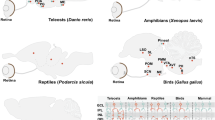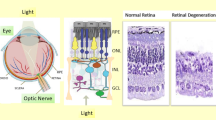Abstract
Melanopsin-based phototransduction is involved in non-image forming light responses including circadian entrainment, pupil constriction, suppression of pineal melatonin synthesis, and direct photic regulation of sleep in vertebrates. Given that the functions of melanopsin involve the measurement and summation of total environmental luminance, there would appear to be no need for the rapid deactivation typical of other G-protein coupled receptors. In this study, however, we demonstrate that heterologously expressed mouse melanopsin is phosphorylated in a light-dependent manner, and that this phosphorylation is involved in regulating the rate of G-protein activation and the lifetime of melanopsin’s active state. Furthermore, we provide evidence for light-dependent phosphorylation of melanopsin in the mouse retina using an in situ proximity ligation assay. Finally, we demonstrate that melanopsin preferentially interacts with the GRK2/3 family of G-protein coupled receptor kinases through co-immunoprecipitation assays. Based on the complement of G-protein receptor kinases present in the melanopsin-expressing retinal ganglion cells, GRK2 emerges as the best candidate for melanopsin’s cognate GRK.








Similar content being viewed by others
Explore related subjects
Discover the latest articles and news from researchers in related subjects, suggested using machine learning.Abbreviations
- GPCR:
-
G-protein coupled receptor
- GRK:
-
G-protein coupled receptor kinase
- PLA:
-
Proximity-dependent ligation assay
- ipRGC:
-
Intrinsically photosensitive retinal ganglion cell
References
Miller JL, Fox DA, Litman BJ (1986) Amplification of phosphodiesterase activation is greatly reduced by rhodopsin phosphorylation. Biochemistry 25:4983–4988
Dromey JR, Pfleger KD (2008) G-protein coupled receptors as drug targets: the role of beta-arrestins. Endocr Metab Immune Disord Drug Targets 8:51–61
Kelly E, Bailey CP, Henderson G (2008) Agonist-selective mechanisms of GPCR desensitization. Br J Pharmacol 153(Suppl 1):S379–S388
Ribas C, Penela P, Murga C, Salcedo A, Garcia-Hoz C, Jurado-Pueyo M, Aymerich I, Mayor F Jr (2007) The G-protein-coupled receptor kinase (GRK) interactome: role of GRKs in GPCR regulation and signaling. Biochim Biophys Acta 1768:913–922
Penela P, Murga C, Ribas C, Tutor AS, Peregrin S, Mayor F Jr (2006) Mechanisms of regulation of G-protein-coupled receptor kinases (GRKs) and cardiovascular disease. Cardiovasc Res 69:46–56
Pitcher JA, Freedman NJ, Lefkowitz RJ (1998) G-protein-coupled receptor kinases. Annu Rev Biochem 67:653–692
Lupi D, Oster H, Thompson S, Foster RG (2008) The acute light-induction of sleep is mediated by OPN4-based photoreception. Nat Neurosci 11:1068–1073
Altimus CM, Guler AD, Villa KL, McNeill DS, Legates TA, Hattar S (2008) Rods-cones and melanopsin detect light and dark to modulate sleep independent of image formation. Proc Natl Acad Sci USA 105:19998–20003
Graham DM, Wong KY, Shapiro P, Frederick C, Pattabiraman K, Berson DM (2008) Melanopsin ganglion cells use a membrane-associated rhabdomeric phototransduction cascade. J Neurophysiol 99:2522–2532
Warren EJ, Allen CN, Brown RL, Robinson DW (2006) The light-activated signaling pathway in SCN-projecting rat retinal ganglion cells. Eur J Neurosci 23:2477–2487
Schmidt TM, Taniguchi K, Kofuji P (2008) Intrinsic and extrinsic light responses in melanopsin-expressing ganglion cells during mouse development. J Neurophysiol 100:371–384
Berson DM, Dunn FA, Takao M (2002) Phototransduction by retinal ganglion cells that set the circadian clock. Science 295:1070–1073
Lin B, Koizumi A, Tanaka N, Panda S, Masland RH (2008) Restoration of visual function in retinal degeneration mice by ectopic expression of melanopsin. Proc Natl Acad Sci USA 105:16009–16014
Newman LA, Walker MT, Brown RL, Cronin TW, Robinson PR (2003) Melanopsin forms a functional short-wavelength photopigment. Biochemistry 42:12734–12738
Reeves PJ, Kim JM, Khorana HG (2002) Structure and function in rhodopsin: a tetracycline-inducible system in stable mammalian cell lines for high-level expression of opsin mutants. Proc Natl Acad Sci USA 99:13413–13418
Weiss ER, Osawa S, Shi W, Dickerson CD (1994) Effects of carboxyl-terminal truncation on the stability and G-protein-coupling activity of bovine rhodopsin. Biochemistry 33:7587–7593
Benovic JL, Regan JW, Matsui H, Mayor F Jr, Cotecchia S, Leeb-Lundberg LM, Caron MG, Lefkowitz RJ (1987) Agonist-dependent phosphorylation of the alpha 2-adrenergic receptor by the beta-adrenergic receptor kinase. J Biol Chem 262:17251–17253
Baver SB, Pickard GE, Sollars PJ (2008) Two types of melanopsin retinal ganglion cell differentially innervate the hypothalamic suprachiasmatic nucleus and the olivary pretectal nucleus. Eur J Neurosci 27:1763–1770
Robinson PR, Cohen GB, Zhukovsky EA, Oprian DD (1992) Constitutively active mutants of rhodopsin. Neuron 9:719–725
Weng K, Lu C, Daggett LP, Kuhn R, Flor PJ, Johnson EC, Robinson PR (1997) Functional coupling of a human retinal metabotropic glutamate receptor (hmGluR6) to bovine rod transducin and rat Go in an in vitro reconstitution system. J Biol Chem 272:33100–33104
Cerione RA, Regan JW, Nakata H, Codina J, Benovic JL, Gierschik P, Somers RL, Spiegel AM, Birnbaumer L, Lefkowitz RJ et al (1986) Functional reconstitution of the alpha 2-adrenergic receptor with guanine nucleotide regulatory proteins in phospholipid vesicles. J Biol Chem 261:3901–3909
Zhang JY, Nawoschik S, Kowal D, Smith D, Spangler T, Ochalski R, Schechter L, Dunlop J (2003) Characterization of the 5-HT6 receptor coupled to Ca2+ signaling using an enabling chimeric G-protein. Eur J Pharmacol 472:33–38
Hasbi A, Devost D, Laporte SA, Zingg HH (2004) Real-time detection of interactions between the human oxytocin receptor and G-protein-coupled receptor kinase-2. Mol Endocrinol 18:1277–1286
Soderberg O, Gullberg M, Jarvius M, Ridderstrale K, Leuchowius KJ, Jarvius J, Wester K, Hydbring P, Bahram F, Larsson LG, Landegren U (2006) Direct observation of individual endogenous protein complexes in situ by proximity ligation. Nat Methods 3:995–1000
Jarvius M, Paulsson J, Weibrecht I, Leuchowius KJ, Andersson AC, Wahlby C, Gullberg M, Botling J, Sjoblom T, Markova B, Ostman A, Landegren U, Soderberg O (2007) In situ detection of phosphorylated platelet-derived growth factor receptor beta using a generalized proximity ligation method. Mol Cell Proteomics 6:1500–1509
Leuchowius KJ, Jarvius M, Wickstrom M, Rickardson L, Landegren U, Larsson R, Soderberg O, Fryknas M, Jarvius J (2010) High content screening for inhibitors of protein interactions and post-translational modifications in primary cells by proximity ligation. Mol Cell Proteomics 9: 178–183
Chen Y, Moiseyev G, Wu BX, Ma JX, Crouch RK (2003) Visual cycle retinoid processing proteins are present in HEK293S cells. Vis Res 43:L3037–L3044
Hattar S, Lucas RJ, Mrosovsky N, Thompson S, Douglas RH, Hankins MW, Lem J, Biel M, Hofmann F, Foster RG, Yau KW (2003) Melanopsin and rod-cone photoreceptive systems account for all major accessory visual functions in mice. Nature 424:76–81
Kimple RJ, De Vries L, Tronchere H, Behe CI, Morris RA, Gist Farquhar M, Siderovski DP (2001) RGS12 and RGS14 GoLoco motifs are G alpha(i) interaction sites with guanine nucleotide dissociation inhibitor activity. J Biol Chem 276:29275–29281
Qiu X, Kumbalasiri T, Carlson SM, Wong KY, Krishna V, Provencio I, Berson DM (2005) Induction of photosensitivity by heterologous expression of melanopsin. Nature 433:745–749
Giesbers ME, Shirzad-Wasei N, Bosman GJ, de Grip WJ (2008) Functional expression, targeting and Ca2+ signaling of a mouse melanopsin-eYFP fusion protein in a retinal pigment epithelium cell line. Photochem Photobiol 84:990–995
Vinos J, Jalink K, Hardy RW, Britt SG, Zuker CS (1997) A G-protein-coupled receptor phosphatase required for rhodopsin function. Science 277:687–690
Lee SJ, Xu H, Montell C (2004) Rhodopsin kinase activity modulates the amplitude of the visual response in Drosophila. Proc Natl Acad Sci USA 101:11874–11879
Panda S, Nayak SK, Campo B, Walker JR, Hogenesch JB, Jegla T (2005) Illumination of the melanopsin signaling pathway. Science 307:600–604
Wong KY, Dunn FA, Berson DM (2005) Photoreceptor adaptation in intrinsically photosensitive retinal ganglion cells. Neuron 48:1001–1010
Tobin AB, Butcher AJ, Kong KC (2008) Location, location, location…site-specific GPCR phosphorylation offers a mechanism for cell-type-specific signalling. Trends Pharmacol Sci 29:413–420
Schmidt TM, Kofuji P (2009) Functional and morphological differences among intrinsically photosensitive retinal ganglion cells. J Neurosci 29:476–482
Tu DC, Zhang D, Demas J, Slutsky EB, Provencio I, Holy TE, Van Gelder RN (2005) Physiologic diversity and development of intrinsically photosensitive retinal ganglion cells. Neuron 48:987–999
Ecker JL, Dumitrescu ON, Wong KY, Alam NM, Chen SK, LeGates T, Renna JM, Prusky GT, Berson DM, Hattar S (2010) Melanopsin-expressing retinal ganglion-cell photoreceptors: cellular diversity and role in pattern vision. Neuron 67:49–60
Walker MT, Brown RL, Cronin TW, Robinson PR (2008) Photochemistry of retinal chromophore in mouse melanopsin. Proc Natl Acad Sci USA 105:8861–8865
Hartwick AT, Bramley JR, Yu J, Stevens KT, Allen CN, Baldridge WH, Sollars PJ, Pickard GE (2007) Light-evoked calcium responses of isolated melanopsin-expressing retinal ganglion cells. J Neurosci 27:13468–13480
McEwen DP, Gee KR, Kang HC, Neubig RR (2001) Fluorescent BODIPY-GTP analogs: real-time measurement of nucleotide binding to G-proteins. Anal Biochem 291:109–117
Acknowledgments
This study was supported by Grants from the National Science Foundation to P.R.R (IOS0721608), and from the National Eye Institute to P. R. R. (R01EY019053). J. B. was supported by an NIH training grant (T32 GM066706). We would like to thank R. Crouch for the gift of 11-cis-retinal and D. Ujla for constructing the phospho-null melanopsin mutant.
Author information
Authors and Affiliations
Corresponding author
Electronic supplementary material
Below is the link to the electronic supplementary material.
Rights and permissions
About this article
Cite this article
Blasic, J.R., Lane Brown, R. & Robinson, P.R. Light-dependent phosphorylation of the carboxy tail of mouse melanopsin. Cell. Mol. Life Sci. 69, 1551–1562 (2012). https://doi.org/10.1007/s00018-011-0891-3
Received:
Revised:
Accepted:
Published:
Issue Date:
DOI: https://doi.org/10.1007/s00018-011-0891-3




